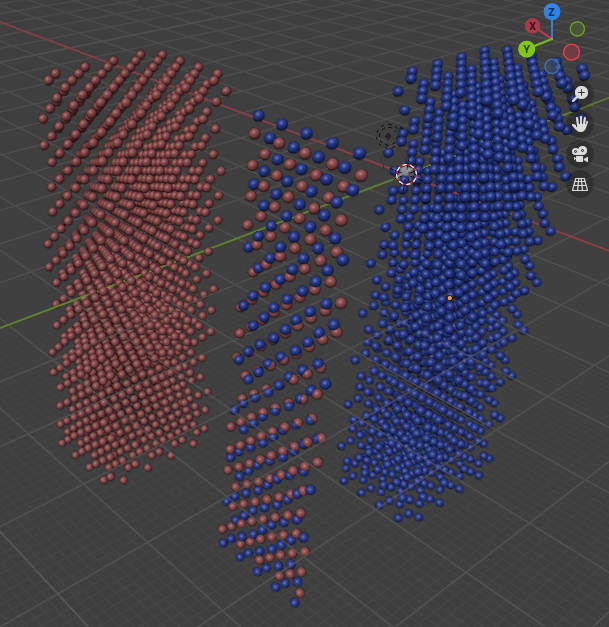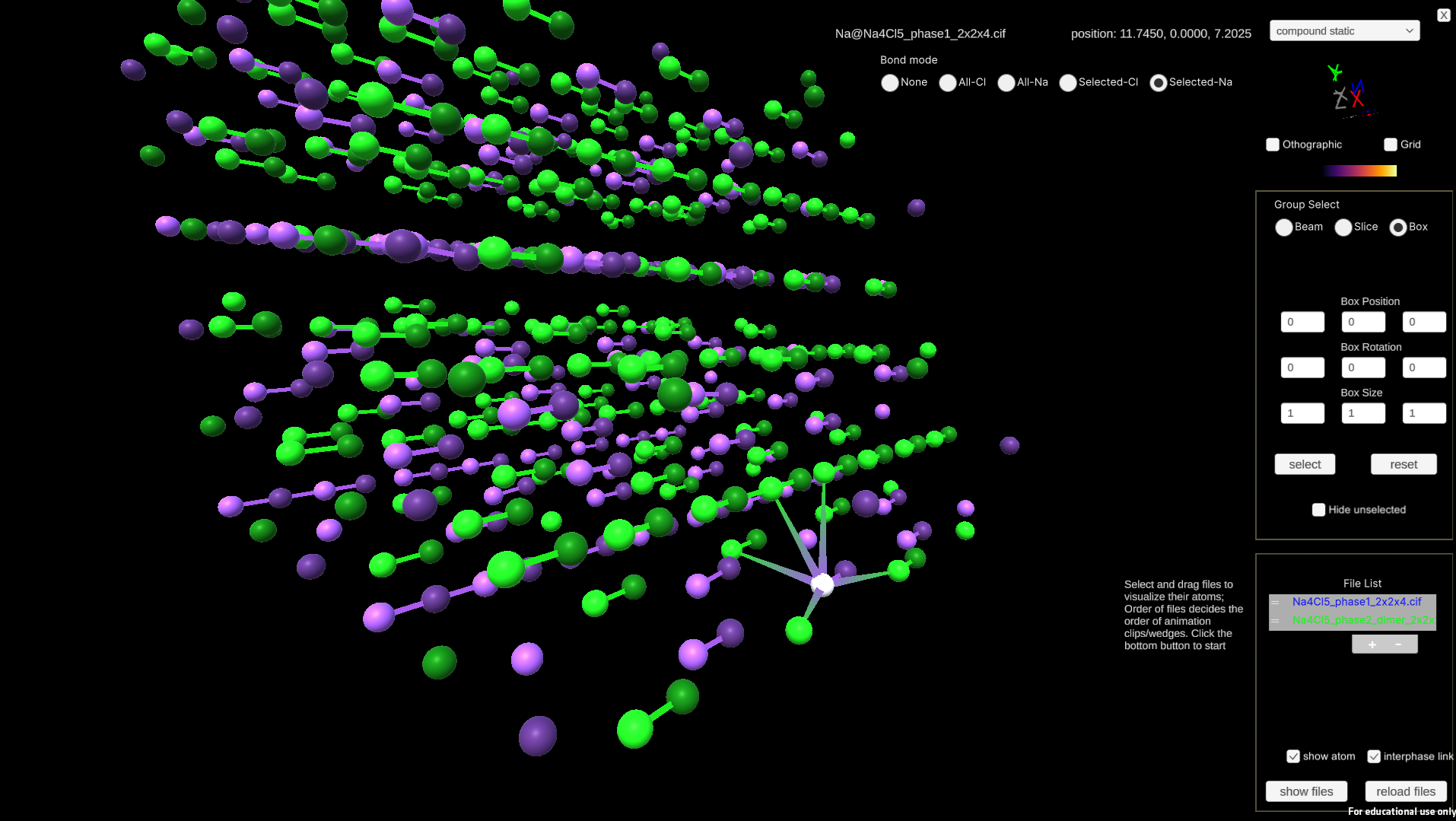
Visualization of incommensurately modulated structures on example of allotropes of bromine at high pressures
InfraVis User
Natalia Dubrovinskaia (LiU),
Nityasagar (LiU),
Leonid Dubrovinsky (Uni Bayreuth)
InfraVis Application Expert
Liang Zhou (MIUN),
Emin Zerman (MIUN),
Roger Olsson (MIUN)
InfraVis Node Coordinator
Mårten Sjöström (MIUN)
Tools & Skills
Unity 3D, Scientific Visualization, Filtering, Mapping
Keywords
Halogens, Atoms, Bonds, Material Science
About
Studies of the behavior of halogens under pressure provide an insight into how simple molecular systems respond to extreme conditions. Fundamental problems to be addressed are the structure evolution, the band gap closure and metallization, phase transformations during molecular dissociation, and others. Previously, single-crystal synchrotron X-ray diffraction studies of crystalline bromine in laser-heated diamond anvil cells at pressures from 45 to 105 GPa were conducted, and bromine’s molecular dissociation above ~80 GPa was observed. The dissociation is realised through a series of polytypes with incommensurately modulated structures. The main intend is to elucidate the mechanism of the transformation and proof that it is common for other halogen systems under compression.
This project focuses on the visualization of halogen crystal structures under pressure, aiming to better understand transformations from molecular to non-molecular phases—particularly those involving incommensurately modulated structures. By leveraging 3D visualization tools, the goal was to make complex atomic behavior more interpretable for researchers studying structural phase transitions in simple molecular systems.
Challenges & Opportunities
The primary challenge addressed by this project lies in the inherent complexity of visualizing incommensurately modulated structures under pressure. These systems, by definition, aperiodic, rendering conventional crystallographic visualization approaches insufficient. The absence of translational symmetry complicates efforts to analyze and communicate structural transformations, particularly those occurring during phase transitions from molecular to non-molecular states.
An opportunity emerged to develop a specialized visualization platform capable of handling aperiodic, particularly incommensurately modulated structures while maintaining clarity and interactivity. The aim was to facilitate both qualitative and preliminary quantitative assessments of complex structural behaviors. Additional challenges included ensuring compatibility with diverse crystallographic data formats (e.g., CIF), managing large datasets with responsive performance, and designing a user interface that supported detailed structural interrogation without introducing visual or cognitive overload.
Initially proposed directions such as virtual reality environments and spectral analysis were excluded during the project’s scope refinement phase. This decision allowed for a focused development cycle centered on building a robust core tool, which could later serve as a foundation for more advanced extensions.
Project Process
The project progressed through iterative development, informed by ongoing dialogue with domain experts in crystallography and materials science. Early phases focused on understanding the specific behaviors of halogen systems under pressure, with emphasis on the spatial irregularities of modulated structures. Based on this input, development prioritized features that would enable researchers to observe, manipulate, and interpret these complex structures in three dimensions.
A dedicated 3D visualization tool was constructed with functionality to:
- Display atomic positions under varying pressure conditions
- Animate structural transitions to reveal transformation mechanisms
- Distinguish and select atoms through multiple interaction modes, including direct selection, bond-based grouping, and volumetric (box/slice/beam) methods
- Visualize directional bond relationships and transitional vectors
Particular attention was paid to data handling, including support for CIF file importation, on-the-fly file switching, and minimal overhead in rendering large atomic assemblies. Usability considerations included the implementation of a reset view function and enhanced selection feedback.
Compatibility testing identified limitations on certain operating systems, leading to further refinement for cross-platform support. Feedback also informed additional refinements, such as the clarification of visual indicators for atom selection and the resolution of interface-level bugs.

Results
The resulting tool enables high-fidelity, interactive visualization of various crystal structures, including aperiodic, with a particular emphasis on structures exhibiting incommensurate modulation. The platform supports both qualitative exploration and structural interrogation, providing features for atom-level selection, group isolation, and the dynamic visualization of transformation sequences.
Users can visually track atomic displacements, examine bond networks, and assess local configurations, facilitating insight into phenomena such as polytype formation and symmetry-breaking transitions. The platform also supports dynamic comparative analysis across pressure conditions via animated interpolations and directional vector representations.
The current system establishes a functional and extensible framework for structural visualization in complex, aperiodic systems.
InfraVis Users’ Information and contact details:
Webpage: https://www.dubrovinskaia.uni-bayreuth.de
Email address: Natalia.Dubrovinskaia < at > uni-bayreuth.de

